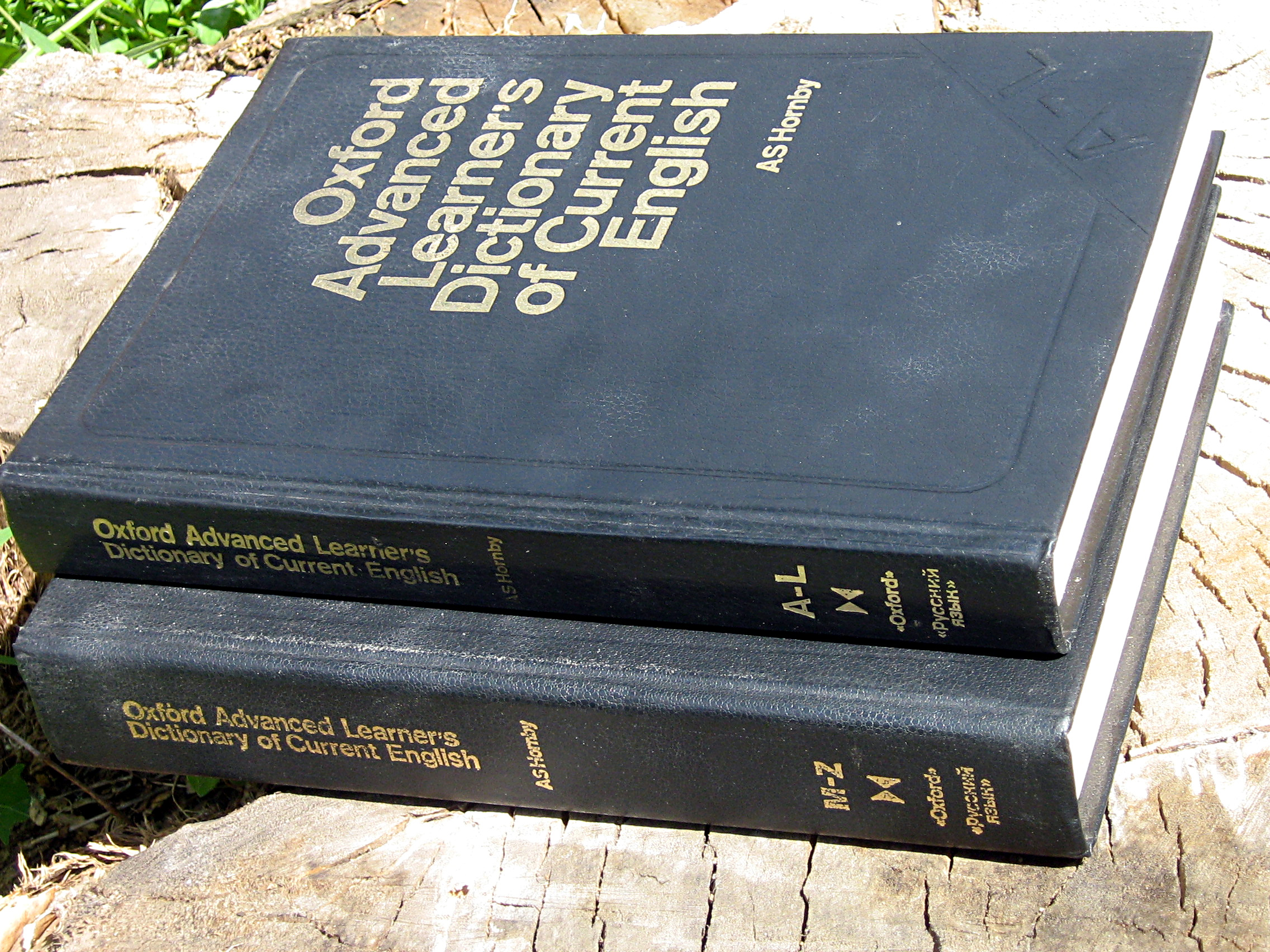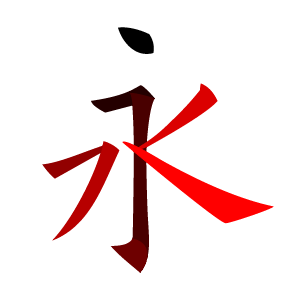|
YES Sorting
The YES stroke alphabetical order (一二三漢字筆順排檢法), also called YES stroke-order sorting, briefly YES order or YES sorting, is a Chinese character sorting method based on a stroke alphabet and stroke orders. It is a simplified stroke-based sorting method free of stroke counting and grouping. "YES" in the English name is the acronym of "Yi Er San", the pinyin expression of the Chinese name. The Chinese name "Yi Er San" (一二三; literally "one, two, three") is in turn formed by the first three of all the Chinese characters in YES order (because stroke "一" lies at the top of the alphabet). YES order has been applied to the indexing of '' Xinhua Character Dictionary'' and '' Xiandai Hanyu Word Dictionary''. In this joint index the user can look up a Chinese character alphabetically to find its pinyin and Unicode, in addition to the page numbers in the two popular dictionaries. Stroke alphabet In the ''Oxford Advanced Learner's Dictionary'', the word ''alphabet' ... [...More Info...] [...Related Items...] OR: [Wikipedia] [Google] [Baidu] |
Stroke-based Sorting
Stroke-based sorting, also called stroke-based ordering or stroke-based order, is one of the five sorting methods frequently used in modern Chinese dictionaries, the others being radical-based sorting, pinyin-based sorting, bopomofo and the four-corner method. In addition to functioning as an independent sorting method, stroke-based sorting is often employed to support the other methods. For example, in Xinhua Dictionary (新华字典), Xiandai Hanyu Cidian (现代汉语词典) and ''Oxford Chinese Dictionary'', stroke-based sorting is used to sort homophones in Pinyin sorting, while in radical-based sorting it helps to sort the radical list, the characters under a common radical, as well as the list of characters difficult to lookup by radicals. In stroke-based sorting, Chinese characters are ordered by different features of strokes, including stroke counts, stroke forms, stroke orders, stroke combinations, stroke positions, etc. Stroke-count sorting This method arranges cha ... [...More Info...] [...Related Items...] OR: [Wikipedia] [Google] [Baidu] |
Pinyin
Hanyu Pinyin (), often shortened to just pinyin, is the official romanization system for Standard Mandarin Chinese in China, and to some extent, in Singapore and Malaysia. It is often used to teach Mandarin, normally written in Chinese form, to learners already familiar with the Latin alphabet. The system includes four diacritics denoting tones, but pinyin without tone marks is used to spell Chinese names and words in languages written in the Latin script, and is also used in certain computer input methods to enter Chinese characters. The word ' () literally means " Han language" (i.e. Chinese language), while ' () means "spelled sounds". The pinyin system was developed in the 1950s by a group of Chinese linguists including Zhou Youguang and was based on earlier forms of romanizations of Chinese. It was published by the Chinese Government in 1958 and revised several times. The International Organization for Standardization (ISO) adopted pinyin as an international st ... [...More Info...] [...Related Items...] OR: [Wikipedia] [Google] [Baidu] |
Xinhua Dictionary
The ''Xinhua Zidian'' (), or ''Xinhua Dictionary'', is a Chinese language dictionary published by the Commercial Press. It is the best-selling Chinese dictionary and the world's most popular reference work. In 2016, Guinness World Records officially confirmed that the dictionary, published by The Commercial Press, is the "Most popular dictionary" and the "Best-selling book (regularly updated)". It is considered a symbol of Chinese culture. This pocket-sized dictionary of Chinese characters uses simplified Chinese characters and pinyin romanization. The most recent ''Xinhua Zidian'' edition (the 12th) contains 3,300 compounds and includes over 13,000 logograms, including traditional Chinese characters and variant Chinese characters. Bopomofo is used as a supplement alongside Pinyin. ''Xinhua Zidian'' is divided into 189 "radicals" or "section headers". More recent editions have followed a GB13000.1 national standard in using a 201-radical system. Besides their popul ... [...More Info...] [...Related Items...] OR: [Wikipedia] [Google] [Baidu] |
Xiandai Hanyu Cidian
''Xiandai Hanyu Cidian'' (), also known as ''A Dictionary of Current Chinese'' or ''Contemporary Chinese Dictionary'' is an important one-volume dictionary of Standard Mandarin Chinese published by the Commercial Press, now into its 7th (2016) edition. It was originally edited by Lü Shuxiang and Ding Shengshu as a reference work on modern Standard Mandarin Chinese. Compilation started in 1958 and trial editions were issued in 1960 and 1965, with a number of copies printed in 1973 for internal circulation and comments, but due to the Cultural Revolution the final draft was not completed until the end of 1977, and the first formal edition was not published until December 1978. It was the first People's Republic of China dictionary to be arranged according to Hanyu Pinyin, the phonetic standard for Standard Mandarin Chinese, with explanatory notes in simplified Chinese. The subsequent second through seventh editions were respectively published in 1983 (Reorganized Edition- now seen ... [...More Info...] [...Related Items...] OR: [Wikipedia] [Google] [Baidu] |
Oxford Advanced Learner's Dictionary
The ''Oxford Advanced Learner's Dictionary'' (''OALD'') was the first advanced learner's dictionary of English. It was first published in 1948. It is the largest English-language dictionary from Oxford University Press aimed at a non-native audience. Users with a more linguistic interest, requiring etymologies or copious references, usually prefer the ''Concise Oxford English Dictionary'', or indeed the comprehensive ''Oxford English Dictionary'', or other dictionaries aimed at speakers of English with native-level competence. History The ''Oxford Advanced Learner's Dictionary'', previously entitled the ''Oxford Advanced Learner's Dictionary of Current English'', started life as the ''Idiomatic and Syntactic Dictionary'', edited by Albert Sydney Hornby. It was first published in Japan in 1942. It then made a perilous wartime journey to Britain where it came under the wing of OUP, which decided it would be the perfect counterpart for the prestigious OED. A. S. Hornby was a te ... [...More Info...] [...Related Items...] OR: [Wikipedia] [Google] [Baidu] |
Chinese Character Strokes
Strokes () are the smallest structural units making up written Chinese characters. In the act of writing, a stroke is defined as a movement of a writing instrument on a writing material surface, or the trace left on the surface from a discrete application of the writing implement. The modern sense of discretized strokes first came into being with the clerical script during the Han dynasty. In the regular script that emerged during the Tang dynasty—the most recent major style, highly studied for its aesthetics in East Asian calligraphy—individual strokes are discrete and highly regularized. By contrast, the ancient seal script has line terminals within characters that are often unclear, making them non-trivial to count. Study and classification of strokes is useful for understanding Chinese character calligraphy, ensuring character legibility. identifying fundamental components of radicals, and implementing support for the writing system on computers. Evolution ... [...More Info...] [...Related Items...] OR: [Wikipedia] [Google] [Baidu] |
Stroke Order
Stroke order is the order in which the strokes of a Chinese character (or Chinese derivative character) are written. A stroke is a movement of a writing instrument on a writing surface. Chinese characters are used in various forms in Chinese, Japanese, and Korean. They are known as ''Hanzi'' in (Mandarin) Chinese (Traditional form: ; Simplified form: ), ''kanji'' in Japanese (), and ''Hanja'' in Korean (). Basic principles Chinese characters are basically logograms constructed with strokes. Over the millennia a set of generally agreed rules have been developed by custom. Minor variations exist between countries, but the basic principles remain the same, namely that writing characters should be economical, with the fewest hand movements to write the most strokes possible. This promotes writing speed, accuracy, and readability. This idea is particularly important since as learners progress, characters often get more complex. Since stroke order also aids learning and memoriz ... [...More Info...] [...Related Items...] OR: [Wikipedia] [Google] [Baidu] |
CJK Unified Ideographs (YES Order)
CJK Unified Ideographs (YES order) is a list of CJK Unified Ideographs sorted in YES order, a simpler alternative to the traditional Radical order employed in CJK Unified Ideographs (Unicode block), List of CJK Unified Ideographs, part 1, part 2, part 3, part 4. YES order YES is a simplified stroke-based sorting method free of stroke counting and grouping, without comprise in accuracy. Briefly speaking, YES arranges Chinese characters according to their stroke orders and an "alphabet" of 30 strokes: ㇐ ㇕ ㇅ ㇎ ㇡ ㇋ ㇊ ㇍ ㇈ ㇆ ㇇ ㇌ ㇀ ㇑ ㇗ ㇞ ㇉ ㄣ ㇙ ㇄ ㇟ ㇚ ㇓ ㇜ ㇛ ㇢ ㇔ ㇏ ㇂ built on the basis of Unicode CJK strokes. YES sorting has been applied to the indexing of all the characters in Xinhua Zidian and Xiandai Hanyu Cidian. Character list (Here is a list of the 20,992 CJK Unified Ideographs (Unicode block) CJK Unified Ideographs is a Unicode block containing the most common CJK ideographs used in modern Chinese, Japanese, Korean ... [...More Info...] [...Related Items...] OR: [Wikipedia] [Google] [Baidu] |
Stroke Orders Of CJK Unified Ideographs (YES Order)
Stroke orders of CJK Unified Ideographs (YES order) is a list of stroke orders of the CJK Unified Ideographs sorted in YES order, a simpler alternative to the traditional Radical order employed in CJK Unified Ideographs (Unicode block), List of CJK Unified Ideographs, part 1, part 2, part 3, part 4. Official Unicode code chart of CJK Unified Ideographs (PDF) Stroke order A is the order in which are written to form a Chinese character. It can be expressed as a seque ...[...More Info...] [...Related Items...] OR: [Wikipedia] [Google] [Baidu] |
Stroke-based Sorting
Stroke-based sorting, also called stroke-based ordering or stroke-based order, is one of the five sorting methods frequently used in modern Chinese dictionaries, the others being radical-based sorting, pinyin-based sorting, bopomofo and the four-corner method. In addition to functioning as an independent sorting method, stroke-based sorting is often employed to support the other methods. For example, in Xinhua Dictionary (新华字典), Xiandai Hanyu Cidian (现代汉语词典) and ''Oxford Chinese Dictionary'', stroke-based sorting is used to sort homophones in Pinyin sorting, while in radical-based sorting it helps to sort the radical list, the characters under a common radical, as well as the list of characters difficult to lookup by radicals. In stroke-based sorting, Chinese characters are ordered by different features of strokes, including stroke counts, stroke forms, stroke orders, stroke combinations, stroke positions, etc. Stroke-count sorting This method arranges cha ... [...More Info...] [...Related Items...] OR: [Wikipedia] [Google] [Baidu] |
Modern Chinese Characters
Modern Chinese characters () are the Chinese characters used in modern languages, including Chinese, Japanese, Korean and Vietnamese. Chinese characters are composed of components, which are in turn composed of strokes. The 100 most frequently-used characters cover (i.e., having an accumulated frequency of) over 40% of modern Chinese texts. The 1000 most frequently-used characters cover approximately 90% of the texts. There are a variety of novel aspects of modern Chinese characters, including that of orthography, phonology, and semantics, as well as matters of collation and organization and statistical analysis, computer processing, and pedagogy. Background Historical development Since maturing as a complete writing system, Chinese characters have had an uninterrupted history of development over more than 3,000 years, with stages including * Oracle bone script, * Bronze script, * Seal script, * Clerical script, and * Regular script, leading to the modern written forms, as il ... [...More Info...] [...Related Items...] OR: [Wikipedia] [Google] [Baidu] |



